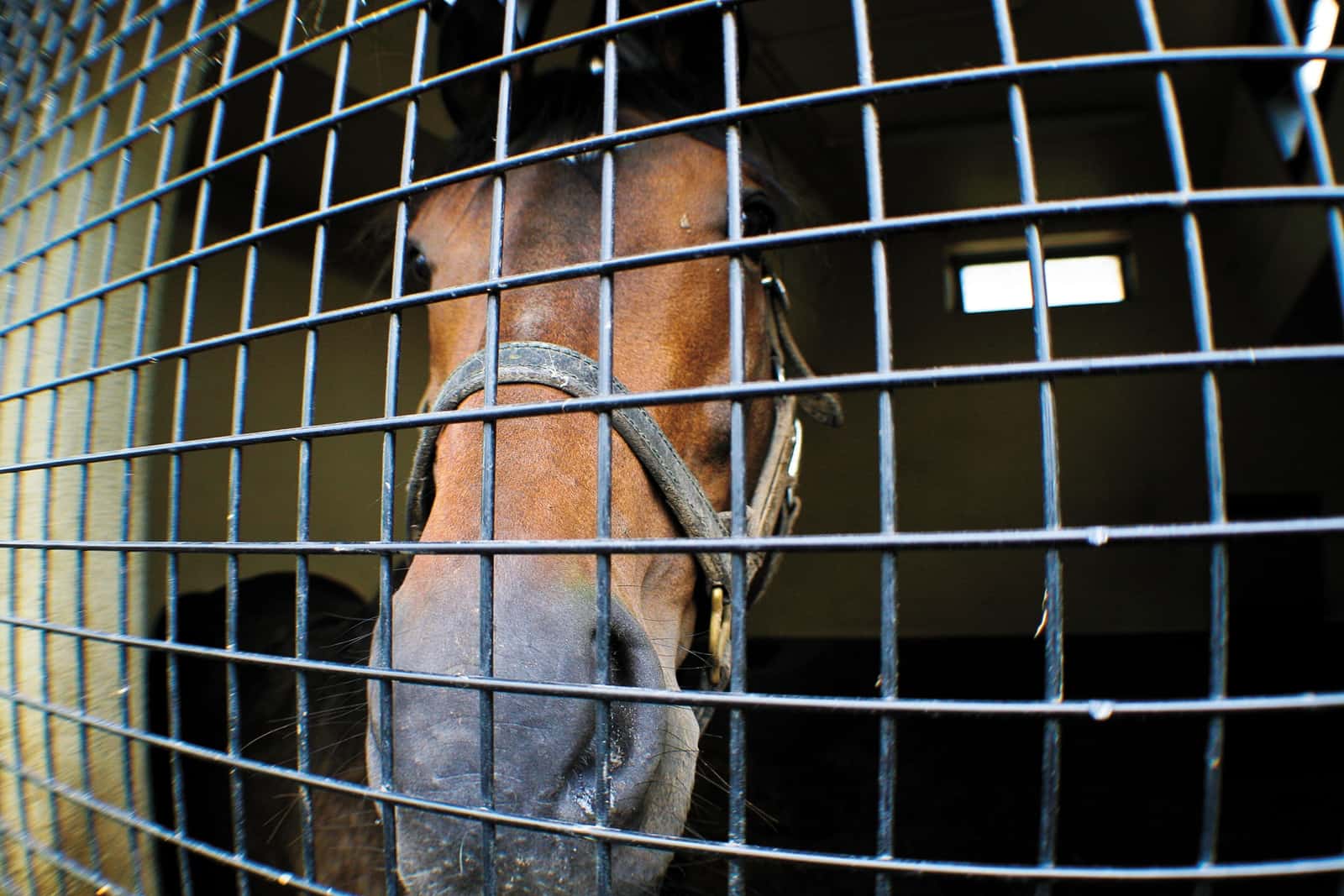Understanding Strangles in Horses

By Charlie Fahy, DVM, and Melissa Hines, DVM, PhD, Dipl. ACVIM
Strangles is a common and highly contagious respiratory disease of equids caused by the bacterium Streptococcus equi subspecies equi. For almost 1,000 years it has been making its rounds through horse populations worldwide. While most horses can clear the infection and recover uneventfully, some require medical attention and a small number can’t be saved.
The bacteria that cause strangles typically enter the horse through the mouth or nose. This most often occurs through close contact with an infected horse, but it can also occur through contact with contaminated surfaces such as buckets, fences, halters, or even people and their clothing. The bacteria can survive for around a month in the environment under ideal wet, humid, cold conditions.
The first sign of infection is usually a fever, which occurs three to 14 days after exposure. The horse might then develop nasal discharge and enlarged submandibular lymph nodes, which appear as a swelling under the jaw. Horses might have difficulty swallowing and, in severe cases, breathing—hence the name strangles. The disease tends to affect younger horses more severely than older ones.
If retropharyngeal lymph nodes become infected, they can rupture into the guttural pouches, which are two air-filled sacs in a horse’s head under the ears. The pus then usually exits the pouches and drains into the nasal passages. In some cases the pus cannot drain from the guttural pouches and forms hardened material called chondroids. Occasionally, other lymph nodes throughout the body can become infected. This is termed metastatic abscessation or “bastard strangles.”
Typically, clinical signs of strangles last about two to three weeks. Most horses stop shedding the organism four to six weeks after clinical signs resolve, but some occasionally shed the bacteria for longer periods. Chronic shedders often have persistent infection in the guttural pouches.
Diagnosis
Veterinarians have many methods for diagnosing strangles but no one perfect test. Currently, they must identify the organism either by culture or polymerase chain reaction (PCR) test for DNA. In general, PCR testing is more sensitive in identifying infection than culture, although, as with any test, false negatives occur occasionally. If it is too early or late in the disease process, the horse might not be shedding the bacteria at the time of testing.
The other consideration for diagnostic testing is the sample’s source. In horses with abscessed and/or draining submandibular lymph nodes, veterinarians can sample the lymph nodes or draining fluid. They can use endoscopy to enter the guttural pouches to obtain a sample for testing and look for enlarged lymph nodes, pus, or chondroids.

Chronic silent carriers can serve as continuous sources of infection for other horses. Endoscopic sampling of the guttural pouches is currently the most reliable way to identify carriers but can be laborious when testing large numbers of horses. Veterinarians can take nasal swabs and washes, but these are more likely to yield false negatives than PCR testing of guttural pouch samples. Researchers have been looking for blood markers that could help identify silent carriers but have not yet found reliable tests. Vets can measure antibody titers, but previous vaccination or infection can affect results.
Once you suspect strangles infection, halt movement of horses on and off your premises. Work closely with your veterinarian to implement appropriate biosecurity, testing, and treatment protocols.
Antibiotics
Many recommendations for strangles treatment and supportive care are straightforward, but antibiotic use in these cases remains controversial. Historically, scientists worried antibiotics would lead to metastatic abscessation, but no conclusive data support this concern. Other issues include antibiotic overuse leading to bacterial resistance, which is also a human health concern. Most horses with strangles do not require antibiotic treatment, but your veterinarian should address each case individually.
Vaccination
Despite how common this frustrating disease can be, vaccination protocols are unclear. Currently, two vaccines are available in the United States: an extract intramuscular vaccine and a modified-live (attenuated) intranasal vaccine. The American Association of Equine Practitioners lists these as risk-based vaccines for horses that travel or that live on properties where horses come and go. Research into strangles vaccination is ongoing, and a new intramuscular vaccine has produced promising preliminary results.
Before administering strangles vaccines, vets might consider testing antibody titers. Horses with high antibody levels might be at increased risk for the rare hypersensitivity immune reaction called purpura hemorrhagica. Vaccines should not be given to any horse during an active outbreak for this same reason.
Written by:
Multiple Authors
Related Articles
Stay on top of the most recent Horse Health news with











